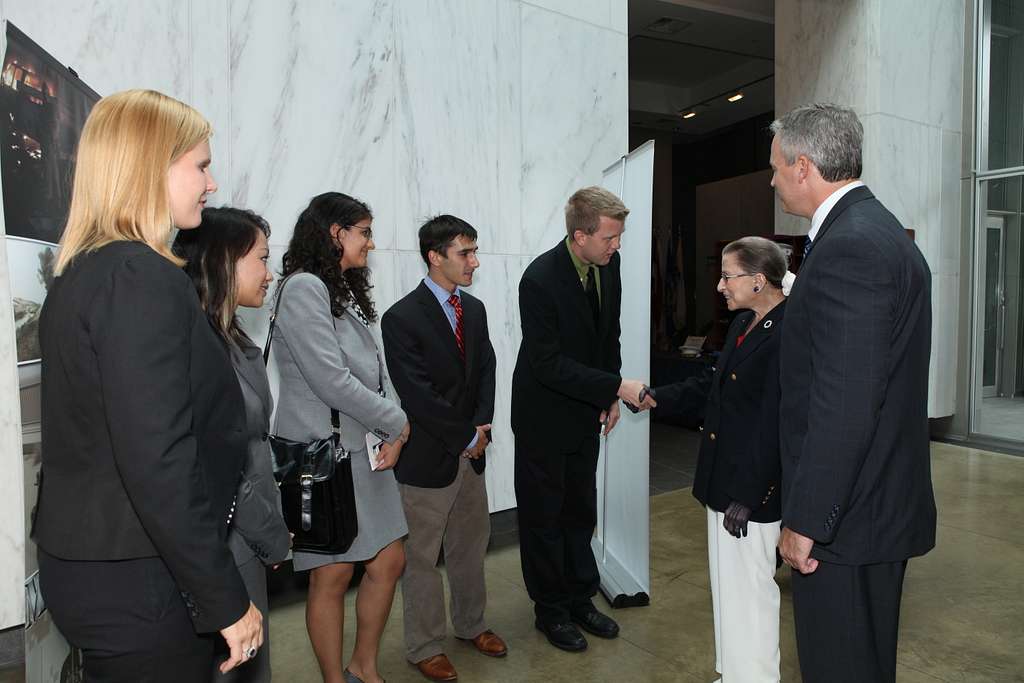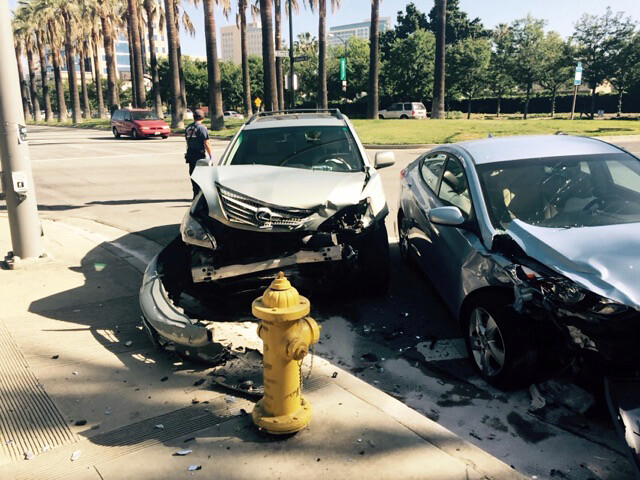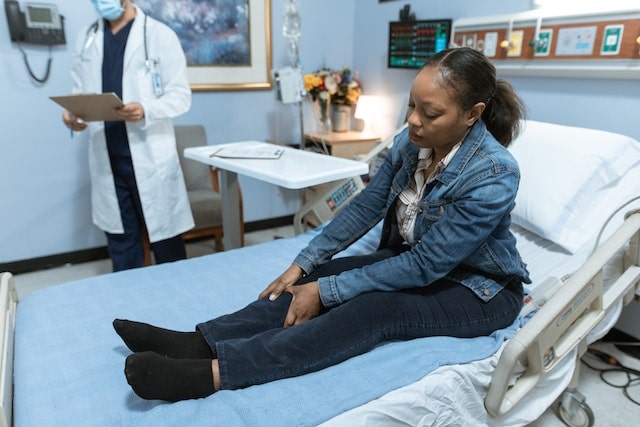It is rare to see a 5102(d) case, which has broad implications in various areas of law, find a probable trip to the Court of Appeals. Absent a settlement or change of heart, this case can prove to be a landmark of sorts – unless relegated to a three sentence memorandum decision.
This is a long post by the way – it involves a lot of copying and pasting. But, it is necessary.
Henry v Peguero, 2010 NY Slip Op 03477 (1st Dept. 2010)
“Plaintiff alleged that he was injured on September 27, 2006 when a Lincoln Town Car, owned and operated by defendants, struck the passenger side of his Honda Accord. Plaintiff did not seek immediate medical treatment but flew to Florida to visit a friend, initially consulting Dr. Bhupinder S. Sawhney on October 11, 2006, following his return. The doctor’s November 20, 2006 report of an MRI of the lumbar spine notes a degenerative condition (“Facet arthropathy from L4 through S1 is evident bilaterally”), and a subsequent report by Dr. Shahid Mian states, “MRI scan of the cervical spine dated 10/12/06 report [sic] diffuse disc dessication.” On the prior motion, defendants sought dismissal on the ground that plaintiff had failed to demonstrate that he sustained a serious injury (Insurance Law § 5102[d]). Defendants tendered the report of a physician, Dr. Gregory Montalbano, who observed that the November 20, 2006 MRI, consistent with one performed on March 23, 2007, showed “degenerative changes which occur over time.” Noting that “[s]ingle level acute disc herniations typically cause incapacitation for two or more weeks and require marked activity modification, bed rest and strong prescription pain medications,” Dr. Montalbano concluded that plaintiff “suffers from a pre-existing condition of degenerative disc disease involving the lumbar spine at multiple levels which is reported for both scans.”
In opposition, plaintiff submitted an affirmation by Dr. Mian stating that “Mr. Henry’s injuries are causally related to the motor vehicle accident of 9/27/06.” However, in the order from which renewal was sought, Supreme Court agreed with defendants that plaintiff’s “injuries and his subsequent surgery were due to a pre-existing degenerative condition,” further finding that plaintiff had “failed to provide an adequate explanation for the gap in treatment.”
On his motion for renewal, plaintiff offered an addendum from Dr. Mian, which [*2]concluded that the “disc herniation of L4-5 and L5-S1 of the lumbar spine are causally related to the accident, and not from a pre-existing condition or long standing degenerative process.” The addendum adds that “the impact from the subject accident plainly made the disc pathologies symptomatic.”
…
“As this Court has emphasized, “Renewal is granted sparingly . . . ; it is not a second chance freely given to parties who have not exercised due diligence in making their first factual presentation”
…
This construction is consistent with this Court’s view that motion practice in connection with summary judgment should be confined to the limits imposed by CPLR 2214(b). As we have stated, “We perceive no reason to protract a procedure designed ‘to expedite the disposition of civil cases where no issue of material fact is presented to justify a trial’ (Di Sabato v Soffes, 9 AD2d 297, 299) by encouraging submission of yet another set of papers, an unnecessary and unauthorized elaboration of motion practice” (Ritt v Lenox Hill Hosp., 182 AD2d 560, 562 [1992]). Thus, a deficiency of proof in moving papers cannot be cured by submitting evidentiary material in reply (see Migdol v City of New York, 291 AD2d 201 [2002]), the function of which is “to address arguments made in opposition to the position taken by the movant and not to permit the movant to introduce new arguments in support of, or new grounds for the motion” (Dannasch v Bifulco, 184 AD2d 415, 417 [1992]). Nor can a deficiency in opposing a motion be cured by resorting to a surreply (see e.g. Garced v Clinton Arms Assoc., 58 AD3d 506, 509 [2009]).
…
“Supreme Court’s grant of renewal in this matter contravenes this Court’s policy of confining motion practice to the limits imposed by the CPLR. Neither of the statutory requirements for renewal was satisfied by plaintiff. Dr. Mian’s addendum was not the result of any additional examination or medical testing; rather, the doctor’s conclusion was based on the medical information previously available to him and could have been included in his original affidavit (see Cillo v Schioppo, 250 AD2d 416 [1998]). While, in appropriate circumstances, renewal may be predicated on previously known facts, it is settled that “[t]he movant must offer a reasonable excuse for failure to submit the additional evidence on the original motion” (Segall v Heyer, 161 AD2d 471, 473 [1990]), which plaintiff neglected to do.”
“Even if this Court were to accept the proffered addendum, it is insufficient to rebut the finding of defendants’ physician that plaintiff’s affliction is degenerative in nature rather than the consequence of a serious injury causally related to the accident (see Lopez v American United [*3]Transp., Inc., 66 AD3d 407 [2009]; Eichinger v Jone Cab Corp., 55 AD3d 364 [2008]). While Dr. Mian’s addendum states that the accident caused plaintiff’s underlying pathology to become manifest, it utterly fails to explain the two-week gap between the accident and the commencement of treatment, which “interrupt[s] the chain of causation between the accident and claimed injury” (Pommells v Perez, 4 NY3d 566, 572 [2005]). Thus, we conclude that defendants submitted “evidence of a preexisting degenerative disc condition causing plaintiff’s alleged injuries, and plaintiff failed to rebut that evidence sufficiently to raise an issue of fact” (id. at 579).”
The proof tendered in support of the motion were plaintiff’s mri REPORTS and a peer doctor who opined, based upon the two reports, that the injuries were degenerative and not traumatically induced. Plaintiff in his original answering papers stated that the injuries were causally related to the accident. Nothing more. In his renewal, he expanded on this a bit.
Supreme Court, as you can see, held that the proof under either paradigm was insufficient to raise an issue of fact. The Court also went to great pains to explain that renewal is not a second bite at the apple.
Now the dissent.
This case, like the recent case of Linton v Nawaz, 62 AD3d 434 [2009], presents the vexing question of the quantum of proof necessary to raise a triable issue of fact concerning causation where defendant alleges the existence of a pre-existing, degenerative condition. Defendants failed to present persuasive proof of a pre-existing degenerative condition, as described in Pommells v Perez (4 NY3d 566 [2005]), and plaintiff’s submissions sufficiently raised a triable issue of fact as to whether his injuries were attributable to the accident as opposed to a pre-existing, degenerative condition. I would accordingly affirm the order of the motion court in all respects.
“[I]n his supplemental bill of particulars, plaintiff noted that he had undergone a percutaneous discectomy at L4-L5 and L5-S1 levels with the Stryker Dekompressor System.
“Defendants filed a motion for summary judgment dismissing the complaint on the ground that plaintiff failed to establish the existence of a “serious injury” (Insurance Law § 5102[d]). In support, defendants submitted, inter alia, an affirmation from Dr. Gregory Montalbano, who performed an orthopedic examination of plaintiff on March 14, 2008.”
…
“Dr. Montalbano opined that plaintiff had not sustained an injury to the lower back as a result of the accident. Dr. Montalbano based this conclusion on two factors. First, he noted that immediately after the accident, plaintiff flew to Florida for a week, which was “extremely unusual behavior” for anyone traumatically sustaining not one but two disc herniations. Dr. Montalbano stated that single level acute disc herniations typically caused incapacitation for two or more weeks, and required marked activity modification, bed rest and strong prescription pain medication. Second, Dr. Montalbano opined that the degenerative changes shown in both MRIs, i.e., multiple level disc bulges and herniations and facet arthropathy from L4 through S1, were the type that would occur over time and not over a two-month period [FN1]. These degenerative changes were consistent with plaintiff’s age and occupation as a boiler fireman. Dr. Montalbano further opined that the discectomy surgery was performed for the purpose of correcting plaintiff’s pre-existing lumbar condition.”
In opposition to the motion, plaintiff relied on Dr. Greenfield’s MRI report of plaintiff’s lumbar spine on November 20, 2006; the March 20, 2007 affirmed medical report of his surgeon, Dr. Mian, who opined that plaintiff’s injuries were causally related to the accident; the June 3, 2008 affirmed report of neurologist Paul Lerner, who found deficits in lumbar range of motion and opined that plaintiff’s injuries were causally related to the accident; and the affirmed report of Dr. Mitchell Kaphan, an orthopedist who examined plaintiff on December 21, 2006 and found range-of-motion limitations in the cervical and lumbar spine, and opined that plaintiff’s injuries were causally related to the accident.
“In opposition to the motion, plaintiff relied on Dr. Greenfield’s MRI report of plaintiff’s lumbar spine on November 20, 2006; the March 20, 2007 affirmed medical report of his surgeon, Dr. Mian, who opined that plaintiff’s injuries were causally related to the accident; the June 3, 2008 affirmed report of neurologist Paul Lerner, who found deficits in lumbar range of motion and opined that plaintiff’s injuries were causally related to the accident; and the affirmed report of Dr. Mitchell Kaphan, an orthopedist who examined plaintiff on December 21, 2006 and found range-of-motion limitations in the cervical and lumbar spine, and opined that plaintiff’s injuries were causally related to the accident.”
By order entered November 10, 2008, the court granted defendants’ motion for summary judgment dismissing the complaint in its entirety, finding that defendants had established, prima facie, that plaintiff had not sustained a “serious injury.” The court relied, inter alia, upon Dr. Montalbano’s opinion, based on his examination of plaintiff and his review of the medical records, that plaintiff did not sustain cervical or spinal injury as a result of the accident, and that the MRI of plaintiff’s lumbar spine demonstrated he suffered from pre-existing degenerative disc disease. The court found, in turn, that plaintiff had failed to raise a triable issue of fact as to whether he had sustained a serious injury within the meaning of the statute. The court noted that “not one of the records or reports” of plaintiff’s treating physicians “addresses the pre-existing degenerative disc disease reported by Dr. Greenfield and described in Dr. Montalbano’s affirmed report,” or “give[s] any objective basis for concluding that plaintiff’s alleged limitations result” from the accident rather than his pre-existing degenerative condition, rendering causality conclusions speculative and insufficient to defeat the summary judgment motion.”
By order entered November 10, 2008, the court granted defendants’ motion for summary judgment dismissing the complaint in its entirety, finding that defendants had established, prima facie, that plaintiff had not sustained a “serious injury.” The court relied, inter alia, upon Dr. Montalbano’s opinion, based on his examination of plaintiff and his review of the medical records, that plaintiff did not sustain cervical or spinal injury as a result of the accident, and that the MRI of plaintiff’s lumbar spine demonstrated he suffered from pre-existing degenerative disc disease. The court found, in turn, that plaintiff had failed to raise a triable issue of fact as to whether he had sustained a serious injury within the meaning of the statute. The court noted that “not one of the records or reports” of plaintiff’s treating physicians “addresses the pre-existing degenerative disc disease reported by Dr. Greenfield and described in Dr. Montalbano’s affirmed report,” or “give[s] any objective basis for concluding that plaintiff’s alleged limitations result” from the accident rather than his pre-existing degenerative condition, rendering causality conclusions speculative and insufficient to defeat the summary judgment motion.
Plaintiff moved, by order to show cause, for renewal of the order pursuant to CPLR 2221(e), based on the December 11, 2008 “addendum” report of Dr. Mian. Counsel asserted that plaintiff had not submitted the addendum report in his original opposition papers because both counsel and Dr. Mian were under the belief that the doctor’s determination that plaintiff’s injuries were causally related to the subject accident — which was based upon his review of the MRI films, the MRI report, his examination of plaintiff and observation of the injured discs [*5]during the operation he performed on plaintiff — had been sufficient to rebut Dr. Montalbano’s findings of degeneration, which were based solely on the latter’s review of the MRI report and not review of the actual MRI films.
In his addendum report, Dr. Mian opined, based on his review of the MRI films, his examination of plaintiff, plaintiff’s lack of any prior neck or back injury, and complaints relating to his neck and lower back since the accident, that plaintiff’s lumbar disc herniations were causally related to the accident and not a pre-existing condition or long-standing degenerative process. Dr. Mian further opined that “even if the disc pathologies reflected in [plaintiff’s] MRI scans were pre-existing or degenerative in nature, given [plaintiff’s] complaints relating to his back since the accident and his lack of any prior injury to those parts of his body, the impact from the subject accident plainly made the disc pathologies symptomatic.”
I would hold that the lower court properly granted the motion to renew, and thereupon properly denied defendants’ motion to dismiss the complaint to the extent indicated above. It was within the court’s discretion to grant leave to renew upon facts known to the moving party at the time of the original motion. Plaintiff provided a reasonable justification for the failure to include information provided in the addendum of his medical witness, citing counsel’s belief that the medical submissions in opposition to defendants’ summary judgment motion were sufficient to rebut defendants’ expert’s finding that the injuries claimed by plaintiff were degenerative (see Rancho Santa Fe Assn. v Dolan-King, 36 AD3d 460 [2007] [court, in its discretion, may grant renewal, in the interest of justice, upon facts known to
the movant at the time of the original motion]; Nutting v Associates in Obstetrics & Gynecology, 130 AD2d 870 [1987] [court properly granted motion to renew based on affidavit of medical doctor where defendants reasonably believed plaintiffs’ failure to provide an affidavit of merit from a medical expert would preclude plaintiffs from successfully vacating default]).
Indeed, the reports of plaintiff’s experts, who had examined him and opined that his injuries were causally related to the accident, were more than sufficient to raise a triable issue of fact (see Norfleet v Deme Enter., Inc., 58 AD3d 499 [2009]). Their conclusions that plaintiff’s symptoms were related to the accident were not speculative or conclusory, but rather, based on physical examinations of plaintiff made shortly after the onset of his complaints of pain and other symptoms, which he claimed arose after his involvement in the motor vehicle accident. By attributing plaintiff’s injuries to a different, yet equally plausible cause (i.e., the accident), the affirmations of plaintiff’s experts raised an issue of triable fact, and a jury was entitled to determine which medical opinion was entitled to greater weight (see Linton v Nawaz, 62 AD3d [*6]434, supra).
In this case there is no “persuasive” evidence of a pre-existing injury of the type described in Pommells v Perez (4 NY3d 566, supra). Dr. Montalbano, who examined plaintiff 1 ½ years after the accident, merely opined that the type of injuries revealed by plaintiff’s MRI (i.e., multi-level disc bulges and herniations and facet arthropathy) were degenerative changes consistent with plaintiff’s age and occupation. Significantly, he did not examine the MRI films themselves, more specifically describe the nature of plaintiff’s injuries or explain why he had conclusively determined that plaintiff’s injuries were degenerative in origin.[FN2]
In any event, the addendum provided sufficient evidence to rebut defendants’ expert’s finding that disc pathologies were degenerative in nature rather than a serious injury causally related to the accident. Dr. Mian opined that the disc pathologies observed by Dr. Montalbano were causally related to the accident, based on his examination of plaintiff, his review of the MRI films, plaintiff’s lack of prior neck or back injury, and the onset of plaintiff’s symptoms following the accident. Dr. Mian further opined that even if disc pathologies were pre-existing in nature, the accident served to aggravate them. This was more than sufficient, at this stage, to raise a triable issue of fact regarding causation (see e.g. Hammett v Diaz-Frias, 49 AD3d 285 [2008] [report of plaintiff’s doctor that her symptoms were caused by accident, and that her condition was permanent in nature and in part an “exacerbation of underlying degenerative joint disease and prior injuries,” sufficient to raise a triable issue of fact]).”
Just note that throughout this discussion, nobody ever examined the actual FILMS!
Second, also note that the dissent was happy to grant renewal for the purpose of forwarding their point of view on the substantive issue.
Now, a probable trip to the Court of Appeals.












